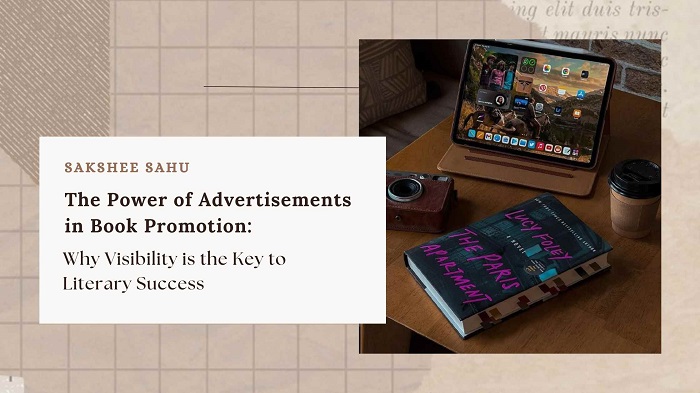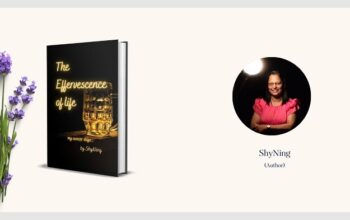In today’s saturated literary landscape, where thousands of books are published every day across platforms and genres, standing out has become as critical as the quality of the content itself. A beautifully written book, no matter how profound or compelling, risks fading into obscurity without strategic promotion. Among the myriad marketing tools available, advertisements, whether digital, print, or hybrid, play a pivotal role in shaping a book’s visibility, credibility, and sales trajectory. Their significance cannot be overstated in the journey from manuscript to market success.
Reaching the Right Audience with the Right Message
Advertising, at its core, is about reaching the right audience with the right message at the right time. For books, this is particularly crucial because readers are not just purchasing a product; they’re investing time, emotion, and mental energy. Unlike impulse purchases, book-buying decisions are more nuanced, influenced by reviews, word-of-mouth, cover appeal, and, importantly, visibility. Ads serve as the gateway to that visibility. They bring the book in front of readers who might otherwise never encounter it, especially if the author is new or self-published.
Related Article: https://www.theliteraturetimes.com/the-impact-of-social-media-on-book-marketing-antara-shivhare/
One of the most effective spaces for book advertisements today is the digital world. Platforms like Facebook, Instagram, Amazon, Google, and even YouTube allow authors and publishers to target readers with precision. For instance, if a book is a dark romance set in a dystopian world, ads can be shown specifically to users who have shown interest in similar genres, authors, or even movies. This kind of granular targeting ensures that the ad spend is efficient, reaching only those most likely to buy. Amazon Ads, in particular, have revolutionized book marketing. Given that many readers go directly to Amazon to search for books, advertising within that space provides immediate and relevant visibility at the point of purchase.
Beyond Digital: Print and Outdoor Ads Still Matter
Social media ads also offer more than just placement, they allow for storytelling. A carousel ad on Instagram can showcase the book’s cover, a gripping quote, an author’s video, and a glowing review all in one post. This creates not just awareness but intrigue, gradually nudging the reader toward a purchase. Video ads have further opened creative avenues, letting authors animate their blurbs, bring characters to life, or share a behind-the-scenes look at the book’s creation. The emotional connection formed through these ads often leads to higher engagement and conversion rates.
Print advertisements, though considered more traditional, still hold significant value, particularly for certain genres and demographics. Literary magazines, Sunday newspaper supplements, niche journals, and academic publications cater to readers who are loyal and discerning. An ad in The New York Review of Books or The Hindu Literary Review carries weight and seriousness that online ads might not always achieve. For academic works, children’s books, or regional literature, placing ads in subject-specific or language-specific magazines and dailies ensures that the message reaches a focused and engaged readership.
Outdoor advertisements, too, have their place in book promotion, especially for major releases or celebrity authors. Posters in bookstores, banners at literary festivals, and even billboards can create mass awareness. While these may not always result in immediate purchases, they build recognition and buzz, two essential ingredients in long-term branding. It’s not just about sales but about positioning the book in cultural consciousness.
Building Credibility and Measuring Impact
Importantly, ads also lend legitimacy. In a sea of self-published and indie works, a well-placed advertisement signals to the reader that someone is willing to invest in this book, that it matters. It sets a professional tone and gives the book an edge. This perception of legitimacy, even if subconscious, can often be the difference between someone scrolling past or clicking ‘Add to Cart’.
Another underrated aspect of ads is their capacity to be tested, measured, and optimized. Digital ads allow real-time tracking click-through rates, conversion rates, bounce rates helping authors and publishers understand what works and what doesn’t. If a particular tagline isn’t generating interest, it can be tweaked. If a certain visual isn’t connecting, it can be swapped. This dynamic feedback loop ensures that promotional strategies are continually refined for maximum impact.
Also Read: https://www.theliteraturetimes.com/small-spoilers-big-impact-a-creative-book-marketing-strategy/
Furthermore, advertisements support broader campaign goals. They can be timed with book reviews, author interviews, podcast appearances, or giveaways to create a holistic promotional push. When a reader sees the book’s ad online, hears the author in a podcast, and spots a review in their favorite magazine, the cumulative effect builds trust and curiosity. Ads don’t work in isolation; they amplify and are amplified by other promotional efforts.
In conclusion, the role of advertisements in book promotion is both foundational and expansive. They offer visibility in a crowded market, enable precise audience targeting, provide creative storytelling formats, and build credibility for the author and the work. While organic reach and word-of-mouth remain powerful, they are unpredictable and slow to build. Ads, on the other hand, offer control, speed, and scale. For authors serious about reaching readers, establishing a presence, and building a sustainable writing career, advertising is not just a tool, it is a necessity.



